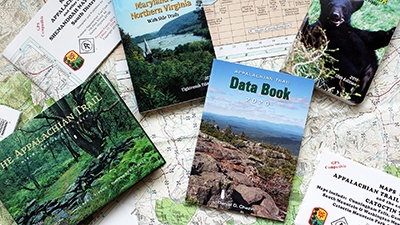by Alivia Acosta, ATC Volunteer Development Coordinator
Clubs Explore New Ways of Engaging Volunteers
Several studies and current day practice by A.T. clubs offer alternatives to some historic ways A.T. volunteerism has been organized. Here are a few examples:
Technology Enhances Volunteers’ Experiences While Supporting Leaders at the Helm
This year the Maine Appalachian Trail Club (MATC) utilized the Appalachian Trail Conservancy’s (ATC) Volunteer Engagement Platform (VEP) to coordinate registrations for their chainsaw training courses. The “VEP was easy to use for the chain saw registration and gave me an immediate response so I knew the application had been received,” said Tom Gorrill, MATC Vice President and training registrant. “It seemed to dovetail well into [MATC’s Chain Saw Coordinator] Craig’s local process he uses to keep us all informed. Craig has always done a great job coordinating the chain saw registration program for the MATC and this year was no exception”.
Helping Volunteers Find Opportunities
Volunteer trends are changing, and it may be for the better. A recent May 2020 study conducted by Points of Light (an organization the mobilizes individuals and organizations to take actions that change the world) found that although only 36% of surveyed participants had volunteered within the past year, 73% stated that volunteering will be more important than ever post pandemic. True to trends during the pandemic, Points of Light reported that three-quarters of nonprofits experienced an increase in demand for their services and 85% of nonprofits reported that requests to volunteer for their organization were at least doubled compared to pre-pandemic.
The ATC also saw a steady flow of volunteer interest. Throughout 2020, approximately 2,467 individuals expressed an interest in volunteering to support the Appalachian Trail (A.T). Most of this interest was received via the VEP.
Respondents to the Points of Light study said that a primary barrier to volunteering was being unsure of how to get involved or where to find volunteer opportunities. ATC intends to support connecting volunteer interest with A.T. club opportunities by serving as a clearinghouse for all A.T. volunteer events and positions. In concert with the VEP, a variety of A.T. partners and volunteer leaders are experiencing the benefits of effective volunteer recruitment and promotion. Many organizations are shifting their operations and scheduling robust and engaging volunteer events well in advance. Other clubs are also offering less traditional means of being an A.T. volunteer such as alternating between responsibilities and trail sections without the need to claim ownership of any one responsibility. This flexibility allows for social opportunities that can help enhance community relations between volunteers and allows for individuals to participate in more than one experience.
In addition to shifting volunteer trends due to the global pandemic, researchers have also found that there are generational shifts taking place. According to the Points of Light study, over half of Generation Z survey participants reported that they had volunteered in the past year, a substantially higher proportion compared to any other age group.
Dropping Obstacles to Membership Opens the Door
Multiple partners are also working above and beyond their immediate responsibilities to the Trail by engaging in inclusive initiatives that ensure future generations are eager and aware of A.T. volunteer opportunities. One example is from the Georgia Appalachian Trail Club (GATC) who recently shifted their long-standing membership requirements. Prior to the pandemic new GATC members needed to accomplish three things: (1) attend a new members orientation, (2) join one work trip, and (3) participate in one other club event of their choice. After having adjusted the ways in which a new member could satisfy these requirements at the start of the pandemic, GATC has now removed all three membership requirements. Anyone interested in becoming a trail maintainer, hike leader, or trail ambassador is welcome to go through their traditional training, which includes learning the art and science of trail work in both a formal group setting as well as an individual one-on-one learning opportunity.
Considering the lack of growth and declining membership that organizations across the nation are experiencing, eliminating membership prerequisites could help with recruiting a new and younger generation.





